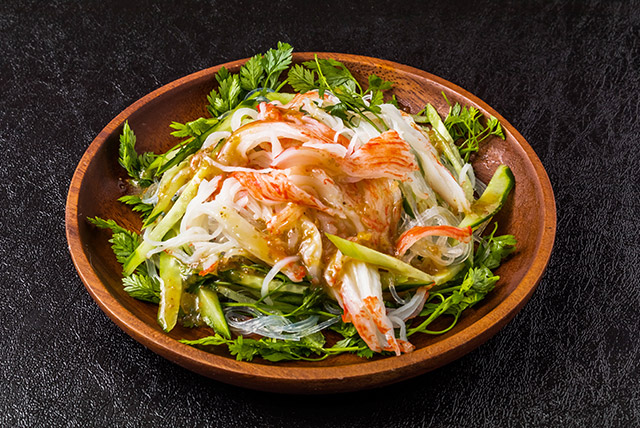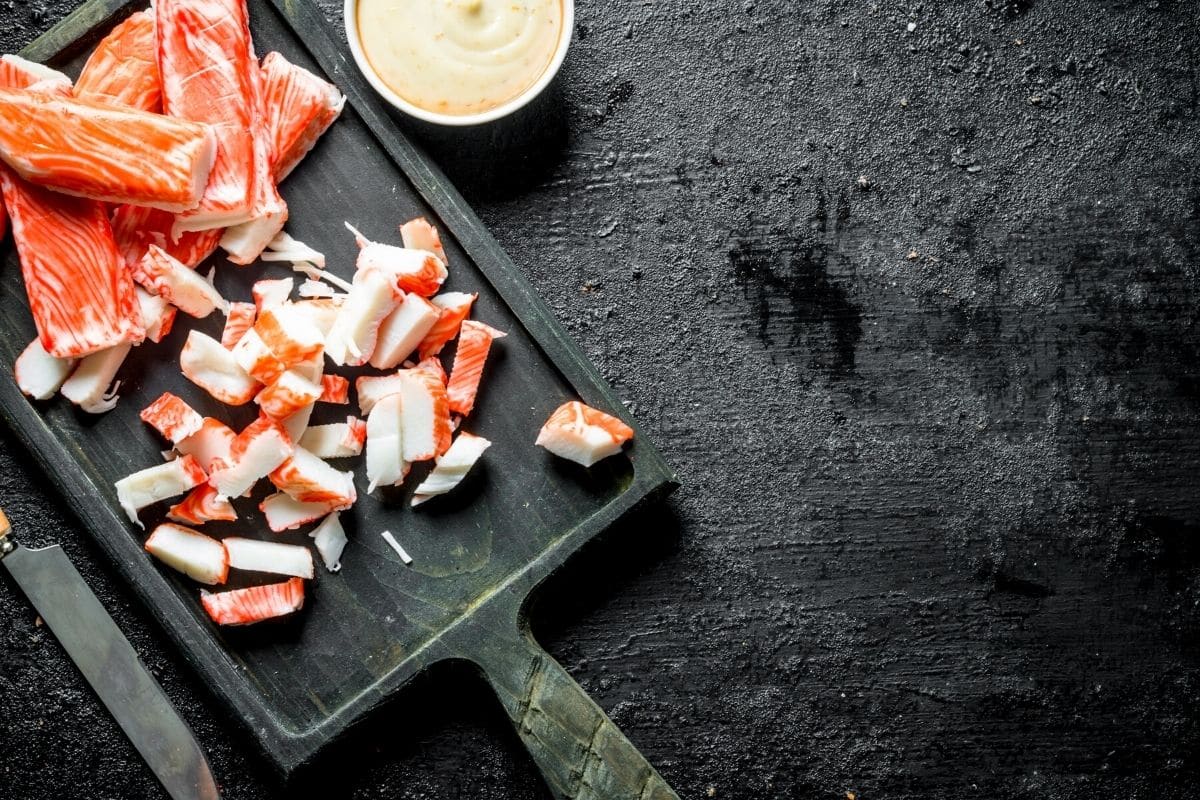If you have eaten at a sushi restaurant, chances are you have seen California Rolls with imitation crab. This artificial crab is cheaper than real crab, making it attractive for restaurants. Is imitation crab gluten free?.
Since so many people like sushi, this is important to know if you have celiac disease or are sensitive to gluten.
For those with celiac disease or gluten sensitivity determining if a food contains gluten is crucial. With seafood like crab being a popular ingredient in many cuisines, a common question is – is crab meat gluten free?
The good news is that crab meat on its own is inherently gluten-free. Crab naturally does not contain any gluten, making pure crab meat an excellent choice for a gluten-free diet However, there are some important considerations when choosing and preparing crab meat while avoiding gluten cross-contamination
In this comprehensive guide, we’ll cover everything you need to know about eating crab meat while adhering to a strict gluten-free diet.
Types of Crab Meat
There are many varieties of crab, but the most common types of crab meat you’ll find include:
-
Alaskan King Crab: Prized for its sweet, tender meat and large size. The long legs contain the largest portion of meat.
-
Snow Crab: Named for its light, flaky white meat. The claws and legs are often eaten.
-
Dungeness Crab: Abundant on the Pacific coast, it has sweet, succulent meat that’s perfect for crab cakes.
-
Blue Crab: Atlantic crab with prized backfin meat. It has a delicate, salty-sweet flavor.
-
Stone Crab: Found off Florida coasts, the meat from the large claws is very tender with great crab flavor.
-
Imitation Crab: Surimi-based product made of minced fish like pollock blended with other ingredients. It contains potential gluten sources.
The meat from all of these crab varieties is naturally gluten-free. The concern comes from added ingredients and cross-contamination during processing and cooking.
Is Canned Crab Meat Gluten Free?
Canned crab meat provides a quick and convenient way to enjoy crab at home. However, the canning process introduces the potential for gluten exposure:
-
Broth or Liquid: Canned crab is often packed in water, brine or a seasoned broth. Check labels carefully for sources of gluten like soy sauce.
-
Preservatives and Stabilizers: Canning agents like maltodextrin can be based on wheat. Always check the ingredients list.
-
Cross-Contamination: Crab packing facilities may also process seafood with gluten ingredients on shared lines.
Your safest bet is choosing major brands labeled “gluten free” with only crab meat and water or salt listed as ingredients. Contact companies directly if you have any concerns.
Is Crab Meat Found in Restaurants Gluten Free?
Dining out on crab opens the door for some hidden gluten troubles:
-
Breading or Batter: Many restaurants serve crab fried in batter or breaded, thickening it with wheat flour. Ask for plain grilled or steamed crab instead.
-
Seasonings: Seasoning blends used to flavor boiled crab often have gluten-based ingredients like soy sauce, teriyaki or malt vinegar. Request plain seasoning.
-
Sauces and Dips: Popular dipping sauces like cocktail sauce, mustard sauce, and melted butter are pitfalls. Ask for plain melted butter or olive oil instead.
-
Cross-Contamination: Restaurants often use common prep areas and cookware for crab and non-gluten-free menu items. Be aware of the risk.
Let your server know you have celiac disease and need plain crab served without seasoning or sauces to reduce the chance of gluten exposure. Check if dedicated fryers are used for fried seafood.
Should You Be Concerned About Cross-Contamination at Home?
Cooking crab yourself allows you to control all ingredients and prep. But minor risks remain:
-
Shared Cutting Boards: If also used for bread, pasta, etc., cutting boards can transfer gluten to crab via crumbs or residue. Use a dedicated board.
-
Shared Cooking Tools: Pots, utensils, tongs, and prep bowls should be dedicated. Wash thoroughly before using for crab if previously used for gluten foods.
-
Fryer Oil: If you deep fry crab at home, make sure fryer oil hasn’t been used for breaded, battered foods. Filter oil between uses.
-
Serving Dishes: Only use gluten-free condiments, sauces, and sides. Don’t add croutons, fried wontons, or bread to the plate.
With some common sense precautions, you can safely enjoy delicious gluten-free crab in your home kitchen.
What About Imitation Crab Meat?
Also called crab stick, krab, or seafood extender, imitation crab is made from fish like pollock blended with wheat starch or flour. This makes it off limits for those strictly avoiding gluten.
Some specialty brands produce imitation crab without gluten ingredients. But due to processing on shared equipment, most experts recommend avoiding it if you are highly sensitive. Opt for real crab instead.
Cooking Gluten-Free Crab Meat at Home
Preparing delicious crab recipes at home lets you control every gluten-free detail. Here are some great ways to cook crab meat:
-
Boiled or Steamed: Season with Old Bay or your own spices. Serve with melted butter.
-
Crab Cakes: Bind with almond flour, rice flour, or cornmeal instead of breadcrumbs.
-
Stir Fry: Toss with rice noodles, veggies, and gluten-free stir fry sauce.
-
Seafood Salad: Mix with mayo, lemon juice, celery, onion, and parsley.
-
Crab Dip: Substitute mascarpone or Greek yogurt for wheat flour-based white sauces.
-
Crab Legs: Steam or boil then crack open. Serve with garlic aioli for dipping.
Let your imagination run wild with all the wonderful gluten-free crab recipes to enjoy!
Good Gluten-Free Brands of Crab Meat
When buying packaged crab meat, these leading brands consistently provide gluten-free options:
- Crown Prince Natural
- Wild Island Wild Caught Crab
- Bumble Bee Premium Crab Meat
- Chicken of the Sea Crab Meat
- Ocean’s Crab Meat
- FreshCatch Plant Based Crab
- Dungeness Crab Co.
As always, diligently read the labels and ingredients to confirm no gluten sources before purchasing and consuming.
Dining Out Gluten-Free Crab
Even when dining out, you can find crab dishes cooked without gluten:
-
Red Lobster’s Ultimate Feast shows ingredients and preparation steps for all menu items. Choose wood-grilled, steamed, or broiled crab.
-
Joe’s Crab Shack has a gluten-free menu featuring crab buckets, steam pots, and crab cakes baked without fillers.
-
Long John Silver’s batter-free grilled crab basket comes with steamed shrimp and seafood salsa. Just avoid hushpuppies.
-
Most higher-end seafood restaurants offer simple steamed crab options. Ask about prep and cross-contamination.

What Is Imitation Crab?
Imitation crab is crab made with non-crab ingredients. Imitation crab is used frequently at sushi restaurants because it is less expensive than real crab meat.
There is something a little strange about crab sticks made from white fish that has been ground up into a paste. This paste combines binding agents like egg wheat and other ingredients to form it into sticks.
White fish meat, like wild Alaska pollock, modified food starch, vegetable oil, and egg whites are common things that are used to make fake crab. These are mashed into a fish paste and then molded in stick form. These fish products also have artificial crab flavorings like monosodium glutamate (msg). It is filled with common additives and occasionally wheat flour or malt vinegar.
You can taste the difference between real fresh crab and imitation. I always opt for the real thing when I can. There is real crab meat available at some restaurants, but it costs more than fake crab meat.
You can often tell the crab is artificial by the name on the package. Krab is often spelled with a K instead of a C. Imitation crab is also uniform in size and shape, making all crab sticks identical. Real crab has color and size variations.
Imitation crab is used in crab cakes, sushi, seafood salads, crab rolls, crab rangoon, etc. Read Is Fish Sauce Gluten Free before you make the crab with any other Asian sauces.
Before you buy imitation crab, you should always read the label to make sure it is gluten-free. If you are new to gluten free living, this gluten-free guide will help you get started!.
Answer: Is Imitation Crab Gluten Free?
No, imitation crab is NOT gluten free. It is filled with gluten ingredients, including wheat. See below for a list of gluten free imitation crab brands. A few brands make gluten-free imitation crab, but not many. With all of its added ingredients, imitation crab is a bit like junk food. Many joke crab sticks are about as good as a hot dog.
Imitation crab is full of gums, coloring, and preservatives. It also often includes MSG, which many can not eat without a reaction.
This Is Sushi Gluten Free article can learn more about gluten and sushi.

Best Ever Gluten Free Crab Cakes | using jumbo lump crab meat with hardly any fillers
Is crab meat gluten-free?
Crab meat is naturally gluten-free! Imitation crab is typically made using a base of cooked pollock fish, making it a no-brainer as the perfect substitute! Real pollock is a healthier alternative because it’s jam-packed with protein, vitamin B12, and selenium which are all important nutrients. Pollock is gluten-free!
Is it safe to eat crab meat during pregnancy?
It is safe to eat crab meat during pregnancy as long as it comes from a reliable source, with appropriate hygienic and sanitary conditions for pre-preparation, preparation and packaging of this food.
Is brown crab meat gluten free?
Hand-picked daily, our fresh brown crab meat is sealed in trays then pasteurised to retain its delicious flavour. We may have to add bread crumbs to the brown meat from time to time when it is watery so we are unable to guarantee that this is a gluten free product.
Are crab sticks gluten free?
As the paste often includes wheat starch, the crab sticks will not be gluten-free, if that matters to you. “Wheat starch is also used, meaning they are not gluten free… crab sticks are quite low in fat but high in sodium and contain far less protein than a real piece of fish or crab.”
